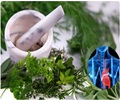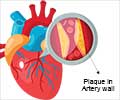- The importance of the omega-6/omega-3 fatty acid ratio in cardiovascular disease and other chronic diseases. - (https://www.ncbi.nlm.nih.gov/pubmed/18408140)
About
Triglycerides are a type of fat found in foods and your body. The body takes the fat from the foods you eat and stores it as triglycerides in the fat cells. Your liver uses triglycerides to produce cholesterol. So, the more triglycerides you have, the higher is your cholesterol level.
The very low density lipoprotein (VLDL or bad cholesterol) in your blood is used to calculate your triglyceride levels. In short, the triglycerides form the bad cholesterol and you need to keep it low.
Keep your triglycerides below 150mg /dL since that is considered to be the normal level. Borderline high triglycerides are from 150 to 199mg/dL and high is 200 to 500 mg/dL. Triglycerides are high risk above 500 mg/dL. Many experts feel triglycerides level below 200 mg/dL is just fine.
High triglyceride levels may up your risk for heart disease, diabetes, and stroke. So, lifestyle changes are a must if you want to lower your triglyceride levels.
One way to keep your triglycerides level in check is to burn more calories than you eat, that is to exercise.

Maintain your dietary intake of fat to 30 percent of the total calories. Choose a diet low in fats, specifically saturated fats. But, it is important to include good fats. Remember omega-3s?
"To decrease intake of saturated fat, the emphasis of your diet should be on consumption of vegetables, fruits, breads, cereals, rice, legumes, and pasta, skim milk and skim milk products, poultry, fish, and lean meat" as per the Therapeutic Lifestyle Changes (TLC) diet recommended by the National Cholesterol Education Program of the U.S. National Institutes of Health. The Program suggests consuming no more than 200 mg of dietary cholesterol a day.
Here's a list of top foods that will help you lower Triglycerides-
1. Whole Grains
Whole grain breads, pasta, cereals, brown rice, basmati rice are foods high in complex carbohydrates and fiber. For example, a cup of cooked oatmeal provides 4g of fiber. Whole grains also provide some protein, and are generally low in saturated fat, cholesterol, and total fat. Six or more servings per day are recommended.
2. Legumes and Peas
Dry beans and peas are good sources of plant protein and are fiber-rich. They should be substituted for foods high in saturated fat, cholesterol, and total fat, but eat only 5 ounces (approx. 142g) per day of plant protein sources. Dry peas, beans, and legumes can be used in nutritious, tasty, lower fat entrees or accompaniments.
3. Fruits and Vegetables
Fruits and vegetables are major sources of vitamins C, E, and A, beta-carotene, other vitamins, fiber, and some minerals and help in lowering high cholesterol levels. The TLC diet recommends eating 2 to 4 servings of fruit each day and 3 to 5 servings of vegetables a day to lower LDL cholesterol. Apples, grapes, strawberries, and citrus fruits are rich in pectin, a type of soluble fiber that lowers LDL. Similarly, vegetables are well endowed with fiber and nutrients such as lipoic acid and vitamins. Vegetables that can help lower triglyceride levels include potato, sweet potato, mushroom, tomato, broccoli, Brussels sprout, spinach, and many others.
4. Flaxseed
Lower omega-6 / omega-3 ratio is desirable to reduce chronic diseases. Researchers have found that a ratio of 4 /1 was important in preventing cardiovascular disease. In order to attain this, you need to increase your omega-3 intake. Flaxseed is very rich in omega-3. This is evident from the fact that 2 tablespoons of flaxseed contain almost 133 percent of the daily requirement for omega-3. But, you have to grind the flaxseed to allow your body to absorb the omega-3 fatty acids. Flaxseed is very high in fiber and helps reduce cholesterol.

5. Fatty Fish
Eating fatty fish is beneficial for your heart since these too are rich in omega-3. The American Heart Association recommends eating at least two servings or 5 ounces of fish a week. Examples of fatty fish include salmon, halibut, lake trout, mackerel, sardines and tuna. Avoid frying them in saturated fats. It is best to consume them baked or grilled. Shellfish are low in saturated fat but vary in their cholesterol content. Shrimp are relatively high in cholesterol, but of course, it can be eaten occasionally.
6. Olive Oil
Olive oil is a low-triglyceride substitute for saturated fats. It comes as extra-virgin, virgin, or light (highly processed). Choose extra-virgin or virgin oils since they are less processed and thus have higher antioxidant content. One of the benefits of olive oil is that it lowers the LDL (bad) cholesterol but keeps the HDL (good) cholesterol intact. However, olive oil too is high in calories, so don’t consume more than 2 tablespoons a day to keep your heart healthy and cholesterol levels low.
7. Egg Whites
Egg whites contain no cholesterol, and they can be eaten often. Replace whole eggs with egg whites or commercial egg substitutes or reduced-cholesterol egg products in your diet as whole eggs contain 215mg of cholesterol per egg. Limit egg yolks to two a week.
8. Lean Meat and Poultry
You can eat up to 5 ounces per day of lean meat and poultry. Remember to trim visible fats from the lean meats. Lean meat is rich in protein, contains a highly absorbable iron, and is a good source of zinc and vitamin B12. ‘Lean meat can contribute to the maintenance of iron stores in pre-menopausal women’, says the NIH. Chicken and turkey are good sources of lean protein and to some extent, iron. Removing the skin and underlying fat layers substantially reduces the fat content. Cook poultry in ways that minimize the addition of saturated fat.
9. Milk and Milk Products
Milk and milk products are important sources of protein, calcium, phosphorus, and vitamin D. Fat-free milk and other fat-free or low-fat (1 percent fat) dairy products provide as much or more calcium and protein than whole milk dairy products, with little or no saturated fat. Fat-free milk or 1-percent-fat milk, fat-free or low-fat cheese, 1 percent fat cottage cheese, and fat-free or low-fat yogurt are good choices, according to the TLC diet.
10. Tree Nuts
Tree nuts such as walnut, almond, hazel nut, pine nut, pistachio, and host of other nuts help reduce cholesterol and are heart healthy. Nuts are high in calories, so restrict yourself to about 42g of nuts a day.

Incidentally, all these foods are an integral part of the Mediterranean diet. Eat these foods, exercise regularly, quit smoking, limit alcohol consumption and watch your high triglyceride levels coming down.








